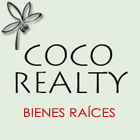A Cup of Coffee
Like many people of my generation, I grew up on Nescafé and supermarket coffee you prepared in a percolator. It wasn’t until the 1970s that coffee shops started spouting up offering blends from all over the world, and we learned to distinguish between light French roasts and dark roasts among other things. Now, living in the state of Oaxaca, where some of the world’s best coffee is produced, I would no more ask for a dark roast than I would for a Nescafé.
Quite simply, a dark roast kills the taste of the coffee bean. Places like Starbucks use dark roasts to be able to guarantee uniformity of product. You get a great caffeine buzz, but you lose the fruity aftertaste. (Think of the difference between drinking a cheap wine and one with a complicated bouquet.) Connoisseurs recommend high-altitude (over 1,000 meters above sea level), medium-roast beans (light to medium brown). The beans or the freshly ground coffee should be stored in a tightly closed, glass or ceramic container at room temperature.










